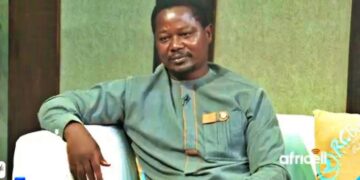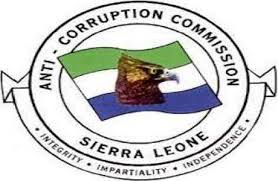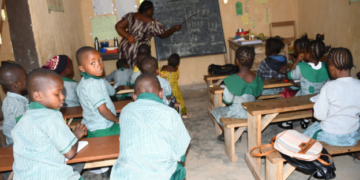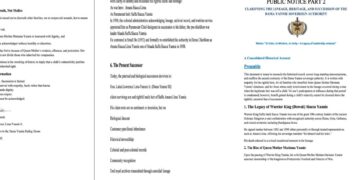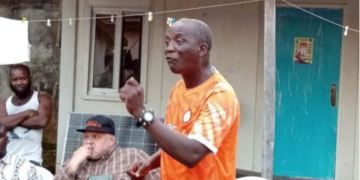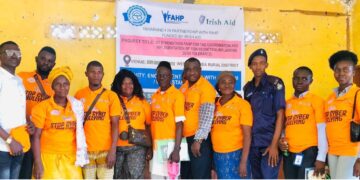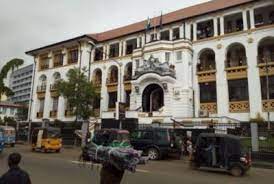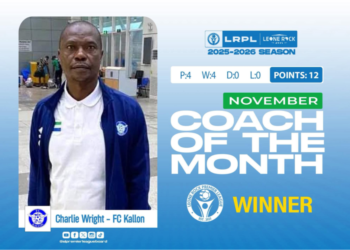By Alieu Amara Suwu
In the ongoing murder trial of Sia Fatu Kamara, the prosecution team, on Friday 1 of November 2024, brought the seventh witness, Dr. Herbert Kallon, who is a medical doctor and surgeon, then at the emergency hospital at Goderich.
Seventh Prosecution Witness Dr. Kallon, led in evidence by state counsel Yusuf Issac Sesay, said he has been a surgeon and medical doctor for about 11 years now.
He said he is voluntarily attached to the Connaught hospital but was previously working at the emergency hospital at Goderich.
“I worked at the emergency hospital from the 1st July to the 1st October 2024. I was there for additional postgraduate surgical training for a period of three months, and my duties by then included treating patients at the outpatient department, treating patient admitted at the hospital, performing pogromed surgical operations with my supervisor, and conducting procedures on patients admitted and also outpatient,” he explained.
Dr. Kallon recalled the 13th of August 2024. On his account, on that day, while he was on duty at the emergency hospital at around 8:am, one of the nurses called him and informed him about an emergency case around 8:25 am.
Upon receipt of that information, the witness said he rushed into the critical area at the emergency room where the patient was and noticed one international doctor and a team of nurses performing cardiopulmonary resuscitation (CPR) on the deceased.
The CPR, he said, involves the application of chest compressions by a health care worker to move blood around the body, breathing of air into the mouth, which is done using an instrument into the mouth through an airbag, and monitoring of the patient and the monitor.
He explained that the procedure also involves giving some drugs to the patient. He added that the CPR procedure involves a lot of health care workers.
The reason why he said they conduct CPR is for the patients who are brought to the hospital unconscious without heart functioning well, to save them (patients).
He explained further that, when he entered the critical area at the emergency hospital where the patient (deceased) was, he went to where the CPR was conducted, observed the procedure, and took notes of what was going on.
According to him, one of his supervisors, Dr. Claudio, was already in charge of leading the process, and on his arrival, the CPR continued for about 15 to 20 minutes.
He said he observed the deceased lying on the bed unconscious without responding to any stimuli, which means she was motionless and not responding to neither voice nor force applied to her chest. He continued that when he checked the monitor, the deceased blood pressure was zero and there was no pulse, adding that the respiratory rate was zero and the Electrocardiogram (ECG), which was to measure the electrical activity of the heart, showed nothing.
During the procedure, he said two medications were applied to the deceased: adrenaline medicine, which they give during resuscitation to restart the heart, and naloxone medicine, which they give to neutralize drugs.
He said the team that was performing the procedure concluded that the patient did not show any sign of improvement throughout, meaning the patient was brought unconscious with no sign of life.
Throughout the procedure, the witness said the deceased remained unconscious with no sign of life, and at the end the deceased was confirmed dead.
Dr. Claudio and some of the nurses, he said, went to inform the relatives of the deceased while he summarized his findings on the outpatient chart and ended with a diagnosis that the patient was clinically dead and asked the nurses to wrap the deceased and transfer her to the Connaught hospital mortuary because the emergency hospital does not have a mortuary.
According to Dr. Kallon, clinically dead is a term used by medical doctors to state that the patient is dead: no heart sound, no breath sound, and “the patient was fixed dilated and unreactive to light.”
The patient (deceased), he said, was never admitted to the emergency hospital because she was confirmed dead and did not meet the emergency hospital criteria. The diagnosis chart of Sia was shown to the witness, whom he identified. It was produced and tendered marked as exhibit H, respectively, to form part of the court records.
In further evidence, the witness said the CPR has some effects, especially when it is being done by someone inexperienced, but when done by a team of experienced health care workers, the side effects of the procedure, he said, are very minimal.
The effects of CPR, according to him, include vomiting, projection of the belly because of the air that is breathed on the patient, and also lead to rib fractures.
During cross-examination of the witness by lawyer Emmanuel Teddy Koroma, he (the witness) confirmed that he has been a medical doctor for 11 years and has a wealth of experience in the medical field.
Lawyer Koroma asked if, with his level of experience, he can tell whether a patient is dead when he sees one; Dr. Kallon said, As a doctor, you cannot see a patient and say he is alive or dead without undergoing a medical process. He said the patient needs to be examined before confirming him clinically dead; in the case of Sia, it was not an exception.
When asked, upon examination conducted on Sia, if she was confirmed dead, the witness said yes, she was.
When he was further questioned if the examination was conducted to ascertain whether the vital signs were present, the witness in response said those were some of the examinations they did on Sia.
Defense asked, apart from examining the vital signs, what else did they do? He responded that they monitored if the vital signs had shown, checked her condition generally, such as electrical activity of the heart, which is not part of the vital signs, and also checked her glass-go-coma scale, which was done to check the conscious level of Sia.
When asked if the CPS is not a lifesaving procedure, he said the CPR procedure involves examination because, while doing that, you monitor how the patient responds. Thus, he confirmed that CPR is a lifesaving process that involves examination because part of it is to ascertain response.
When asked that one cannot conduct CPR on a dead person after being confirmed clinically dead, the witness replied in the affirmative, adding that they did conduct CPR on Sia.
He further put it to the witness that while examining a patient who is dead, there are specific signs that would confirm that a patient is dead. The witness replied in the affirmative.
And of those signs is coldness of skin; the witness said yes but cannot determine whether a patient is dead or not.
When asked if he knew what regomotist was, he said no. The defense lawyer, Koroma, enlightened the Court that it is the stiffness of the mussels.
And when asked that, part of their examination they realized Sia’s mussels were stiff, he responded that, in their profession, they have signs that can confirm that a patient is dead. And said these signs, among others, are heart and breath sounds.
After cross-examination, Justice Momoh Jah Stevens ordered the adjournment of the matter to Friday, the 8th of November 2024, for a further hearing while the accused remains in custody.


